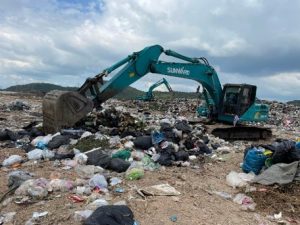Contamination of microplastics, influencing factors and its relationship to chemical characteristics of municipal solid waste landfill leachate
Highlight: In Thailand, most of plastic waste end up in non-engineered landfills.  It causes leakage of microplastic and plastic additives to the environment and thus enter food chain. Relationship between plastic physical degradation and generation of microplastic and additive is the focus of this study.
It causes leakage of microplastic and plastic additives to the environment and thus enter food chain. Relationship between plastic physical degradation and generation of microplastic and additive is the focus of this study.
Researcher Name: Dr. Jutamas Kaewsuk
Years of execution: 2022-2024
Funder Name: Mahidol University
Objectives:
- Compare abundance of microplastic, phthalate acid ester (PAEs) and brominated flame retardants by age and management strategies of landfills.
- Identify relationship between microplastic, phthalate acid ester (PAEs) and brominated flame retardants
- Exhibit physical degradation of microplastic and generation of phthalate acid ester (PAEs) and brominated flame retardants under natural condition e.g. sun exposure and water leaching
Abstract
Various kinds of plastic has been developed for more than 70 years as response to consumption needs. . Each year more than 400 Mt of plastic is produced. Around 50% of its products is single-use plastic which become plastic waste within very short life time. With very low recycling rate, most of plastic waste end-up in landfill. 84.7 % of landfills in Thailand is open dump with no proper design and management practice. Plastic additives could release into landfill due to physical and biological degradation of plastic waste and microplastic. This study aims at investigation contamination of microplastic and plastic additives in landfill leachate from engineered landfill and open dump with variation of landfill ages. The results are expected to contribute to better understanding of this emerging contaminants releasing to the environment and could be information for further study on health risk assessment.




